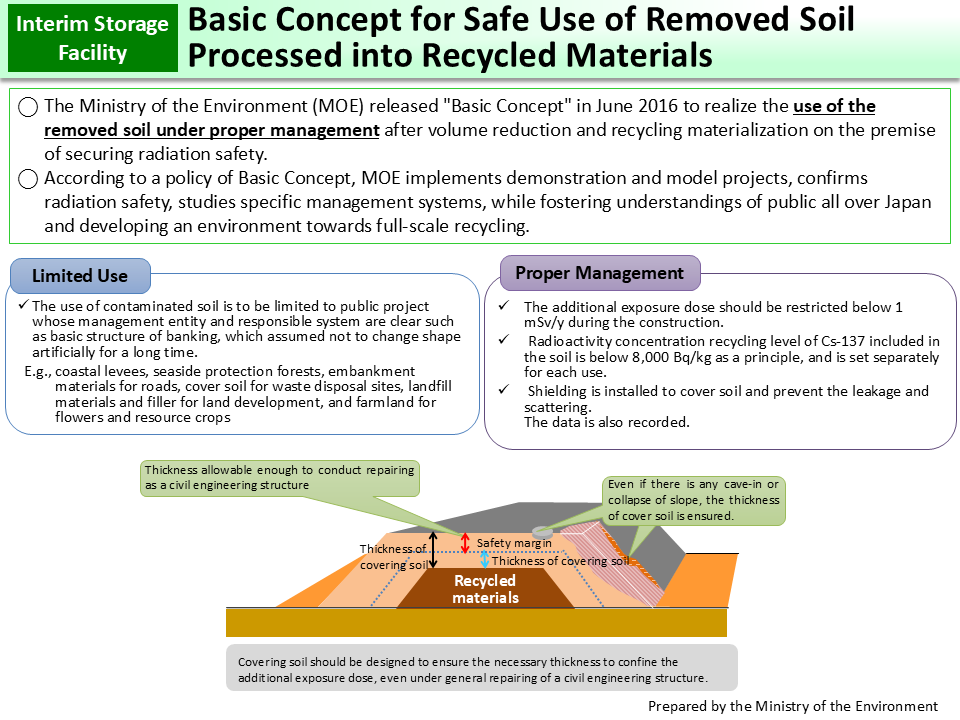Basic Concept for Safe Use of Removed Soil Processed into Recycled Materials
To achieve the final disposal outside Fukushima Prefecture of the removed soil arising from decontamination work within the prefecture, it is important to reduce the total amount for final disposal through managed recycling.
In June 2016, the Ministry of the Environment (MOE) compiled the “Basic Concept for Safe Use of Removed Soil Processed into Recycled Materials” in order to promote the safe use of removed soil converted into recycled materials in an appropriate manner, while fostering understanding and confidence among the public and local residents. The Basic Concept envisages that the use of recycled soil should be limited only in public works, for which management entities and responsibility-related systems are clarified. It also sets the upper limit for radioactivity concentrations of recycled materials to limit additional effective dose, with the assumption that they are used under proper management, by such means as shielding with cover soil.
Based on this Basic Concept, the MOE is implementing demonstration projects for the creation of an embankment in Minamisoma City, for the development of farmland in the Nagadoro District of Iitate Village, and for the creation of embankments for roads in the Interim Storage Facility. Through these projects, the MOE found that ambient dose rates did not change before and after the creation of embankments and that radioactivity concentrations in the air and rainwater seepage, etc. were below the standard limit. Thus, it was confirmed that processed removed soil can be recycled safely. Furthermore, measured concentrations of radioactive cesium in rice and vegetables grown in developed farmland in the Nagadoro District of Iitate Village were confirmed to be far below the standard limit for general foods (100 Bq/kg). From now on, based on the results of these demonstration projects for recycling, the MOE will formulate the standards and guidelines and will proceed with the efforts for full-scale managed recycling in FY2025 onward.
At the aforementioned demonstration sites, the MOE organizes site tours for the general public, as well as tours and visits for a wide range of people, including students, local governments, and overseas organizations, with the aim of obtaining public understanding concerning final disposal and the managed recycling of removed soil and waste.
MOE's website, “Recycling of Removed Soil”
http://josen.env.go.jp/chukanchozou/facility/recycling/ (in Japanese)
- Included in this reference material on March 31, 2019
- Updated on March 31, 2024

